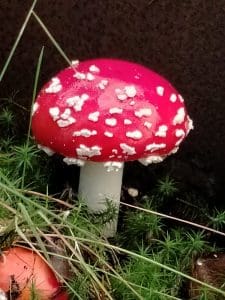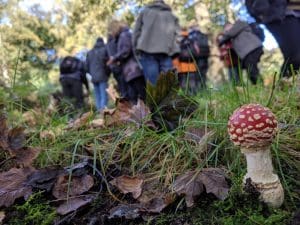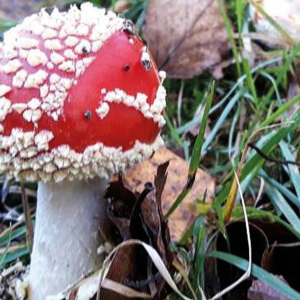Fly Agaric /Autumn / Inedible (sort of)
Step into the intriguing world of the Fly Agaric (Amanita muscaria), a mushroom that captivates with its iconic appearance yet holds no place on the dining table.
Join us on a journey of exploration and understanding as we delve into the enigmatic nature of this fungus. With its striking red cap adorned with white spots, the Fly Agaric stands as a captivating symbol in folklore and mythology. However, its consumption is not recommended due to its potentially toxic nature.
Learn to identify its unique features, explore its preferred habitats, and understand the risks associated with ingesting this mushroom. Respect for nature’s wisdom and responsible foraging practices are essential in navigating the realm of the Fly Agaric. Embrace the intriguing allure and rich cultural history surrounding this enigma, while ensuring your safety and well-being in the natural world.
Let us embark on a journey of knowledge and respect as we unravel the mysteries of the Fly Agaric, a testament to the intricate wonders that nature provides.
Common Names
Fly agaric, shamans’ gift, Walt Disney mushroom, fly fungi
Botanical Name
Amanita Muscaria
Meaning of Botanical Name
Muscaria from the Latin Musca meaning to fly.
Family
Amanitaceae
Known Hazards
Poisoness when raw – can lead to hallucinations and severe vomiting.
Could be confused with
unique in colour and size
Cesars muchsroom – which does not have the distinct white spots on the cap.
Potentially one of the other grey or cream amanitas if there’s been really heavy rain which has washed away the red colouring in the cap of the fly agaric (although it would be suprising)
Food Plant of….
Deer like to feast on this fungi, causing them to act strange.
Range and Distribution
Worldwide
Habitat
Fly Agaric forms a symbiotic relationship with many trees, most specifically pine, spruce, fir, birch and cedar, so can be found in many woodlands.
Foraging Fly Agaric Video
Physical Characteristics of the Fly Agaric
Fly agaric is one of the most easily recognisable mushrooms, mainly from its use as walt disneys generic mushroom.
Cap
It’s cap, up to 20cm across, is scarlet red with spotted, conical, white fleece like scales. Starting hemispherical developing flat, the margins can appear striate.
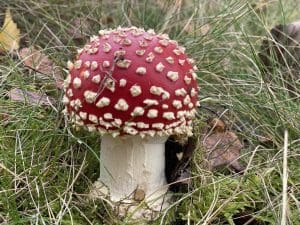
Gills
Gills are crowded and white and free.

Stem
The white stipe, to 20cm tall, is cylindrical and hollow with a bulbous base which is encased in a volva, the stipe holds a connected skirt type ring and the stipe tends to be smooth above this ring and slightly scaly below.
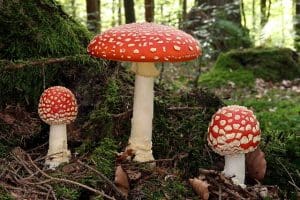
Spores
Spores are white and oval.
Folklore, tall tales, and not so folklore
A man called big raven is said to have caught a whole whale, but was unable to haul the load back to his starving village. He appealed to the deity of existence who spoke back to him and told him to find and eat the white stalks with spotted scarlet hats, these are the spirits of strength. On doing so big raven was able to carry the haul back to his pleased family although he was unable to eat the kill due to severe vomiting and died of exhaustion. A story of one mans aided sacrifice for the sake of his village.
Herbal uses of the Fly Agaric
Traditionally small doses of the base of this fungi have been used to aid sore throats and general sickness. It has also been using in aiding sleeping and repetitive dream walking.
It has recorded use as a mood enhancer and anti-depresent.
Miscellaneous
It’s stated that slicing the fresh mushroom lengthwise to 1cm slices and placing in an oven at 110F oven until dry, will evaporate the muscarine and will convert the ibotenic acid into muscimol. This effect can be reversed if mixed with carbonated liquid.
Why use fly agaric if it takes this processing?
From an identification point of view, this fungi is unmistakable, it’s very common, abundant and a simple 10 minutes of pressure cooking results in a texture that is really good and a flavor that is subtle and very pleasant (please conduct your own research before pressure cooking and eating)



